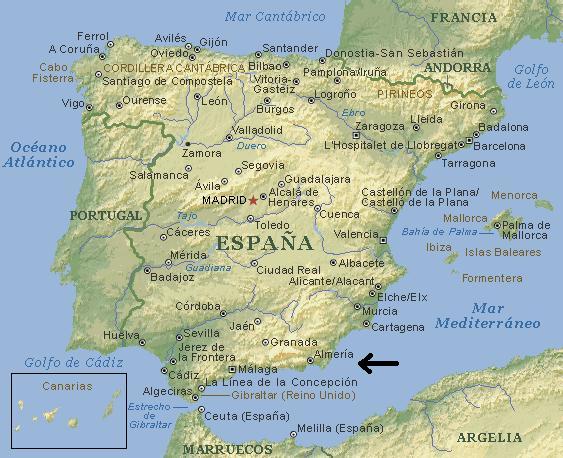
ALMERÍA: A PLACE IN THE
SOUTH OF SPAIN

 |
Almería is at the Mediterranean sea. Here we can observe a sight of the port of the city.
|
|
Almería has centuries of history. The best example is the Arab castle that watches over the entire city. |
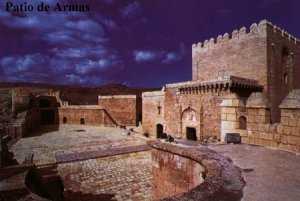 |
|
|
The front door of the Cathedral is majestic.
|
| And this is an interior sight of the Cathedral. | 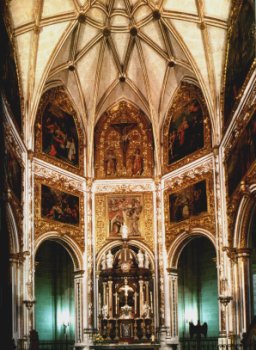 |
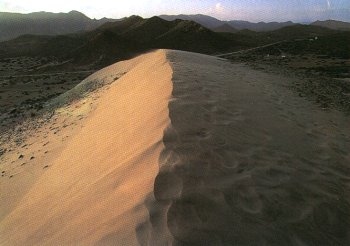 |
Almería has the only
desert in Europe. Here there is a dune.
|
| Almería also has got great nature landscapes, like this lake with flamingos. | 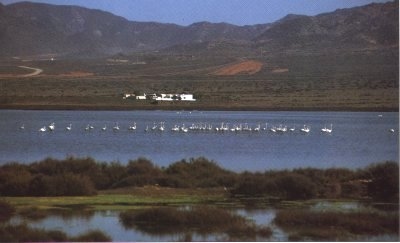 |
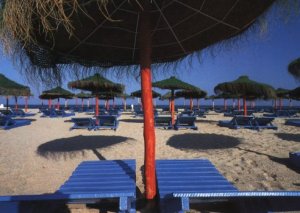 |
Finally, the best known
place in Almería is the beach.
This is one of the many Almería has got. |
TOURISM
Almería is a privileged area in the South East of Spain. In fact, it is the sunniest city of this European country. There are also some brave people who dare go swimming in Winter in the blue water of the Mediterranean. The weather is hot and dry. Consequently, Almería is usually chosen by tourists due to its cloudless sky.
There are different civilisations which have left their mark in this city which once was Greek, Arabic, etc. Undoubtedly, the most important influence here has been the Arabic one.
Almeria is world wide known because of its virgin fine sandy beaches and its lonely coast although the truth is that there are also wonderful white villages in the interior. It has such a pure atmosphere that there is also an observatory in Calar Alto.
The sea and the desert coexist with the most fertile and productive large vegetable garden of the old European continent. Almeria also has lots of landscapes which are full of contrasts. On the one hand, the tourists can visit the Tabernas desert, known due to the films that have been shot in it, and at the same time they can visit the rupestrian caves in Los Velez or the natural reserve of Cabo de Gata- Nijar, where there are great desert beaches.
Some of the most important monuments in this city are:
· The Castle in Los Vélez: it was built on top of an Arabic palace. Its patio was built in white marble and it is the most important part of the castle. This patio was called Patio de Honor and was sold in 1903. Nowadays it is in the Metropolitan Museum of New York.
· The Cathedral: It has a religious nature. In its inside, we can find that it was built following various styles. Its most important parts are its cloister and its chancel.
·
The Alcazaba: It is more than 1000 years old
and was built by an Arabic king. It is divided into three grounds which belong
to the three different epochs in which they were built. The Arabians tried to
give this construction all their splendour.
On the other hand, the tourist can also go to different areas of this province such as:
· Alpujarra. In contrast with the rest of Almeria, this area is very important because there are several rivers and brooks which are born in it. It also has various forest footpaths and tracks. Travellers arrive here at any season of the year and visit some villages such as Abla, Alcolea, Alhama de Almería, Berja, Dalías, Fondón, Padules, etc.
· Sierra Nevada. It is the main place where skiers from all over the world go in Winter. In its varied landscapes there are rivers, pinewoods, etc.
· Sierra de Gádor. There are two villages in this area: Gádor and Celín. It is a dry zone but it also has plenty of fountains which are born in a natural way.
· Nijar fields. They are full of green houses. The village of Nijar is well known because it is devoted to the Esparto crafts, etc.
· Almeria is a province made up of many white villages where we can find interesting beaches and archaeological ruins. Among this, we have: Aguadulce, Adra, Mojácar, Vera (important naturist beaches), Níjar, etc.
Concerning the gastronomy of this unique city, tourists can eat here all kinds of fish, seafood, vegetables..., and drink all kinds of wines. Nevertheless, one cannot visit Almería without tasting its famous “tapas” (savoury tidbits) or without talking to its kind and friendly inhabitants.
CULTURAL OFFERS
Almería
does not have an intensive cultural life, but there are some activities during
the year that maintain alive the flame of the art in the city. The cinemas,
theatres and art galleries either offer nothing spectacular, giving a rather
modest impression of the culture in Almería. Even though, if
you want to spend any pleasant evening attending a cultural act, you can
do it. You just have to know where to go.
There
are several cinemas in the capital:
“Centro
Cine”, with 3 rooms.
“Minicines
Hesperia”,
with 3 rooms.
“Imperial”,
with 4 rooms.
“Roxy
Cinema”, with 2 rooms.
“Apolo"
Theatre, which is one of the oldest cultural building of Almería.
And
the “Cervantes” Theatre. Here we can attend to meetings of cinema and
theatrical representations. Without forgetting the "Maestro Padilla" Auditorium,
which is probably the most important cultural building of the city. Here there
are photographic and painting expositions and there are concerts, operas,
theatre plays and all kinds of cultural manifestations. There is also what is
called “Cine Club” offered by the University. Once a week you can watch a
movie in a small room of the Auditorium. It is cheaper than the standard
cinemas.
Several
classical music concerts are given at churches in remarkable dates such as
Christmas or Easter.
There
are also places called “café teatro”, such as “Zagüán” or “Café
Paso a Paso” in which you can watch for example a theatre play or a music
concert.
Known
public and private institutions offer conferences, music, theatre, cinema,
gatherings, painting expositions, photograph, books presentations and other
cultural activities. The most important institutions are:
“Aljara” Association
Artistic
Association “El Taranto”
Cultural
Association “Musicoterapia”
Cultural
Juvenile Association “Cóndor”
Juvenile
Association “Totzal”
Andalusian
Center of Photography
Mercantile
and Industrial Circle
Social
Foundation for the Progress of Andalusia
Mediterranean
Ecologist Group
Peña “El Morato”
Museums
in the city:
Museum of Almería. It gathers archaeological
pieces of different cultures, many of them coming from the quarries accomplished
in the province by the Belgian engineer Luis Siret. It has four rooms. Another
room keeps pieces of the Alcazaba, which is the most important and
representative medieval monument of
Almería.
Prehistory Room (Public Library
“Francisco Villaespesa”).
History
Room (Provincial Historical File).
Here
there is a list of the most important museums in the villages of the province of
Almería:
Benahadux.
Archaeological Reproductions Museum.
Cabo de Gata. Natural Park Museum “Las amoladeras”.
Chirivel.
Popular Arts Museum.
Cuevas del Almanzora. Museum Contemporary Art.
El
Ejido.
Room Local History Museum.
Gádor.
History museum, Art and Popular Costumes.
Pechina.
Museum of Art and Popular Costumes.
Vera.
Archaeological Museum.
The
most important Public Library is “Francisco Villaespesa”. The University of
Almería also offers a wide variety of books in its library.
"Abierto
Hasta el Amanecer". It
is an alternative to alcohol in the youngsters. Its aim is to offer little
activities such as concerts, dance lessons, and different types of
activities that take place during the night at the weekends. They are
addressed to young people. www.portalmeria.com/abierto
As
you see, there is not a very wide range of possibilities here. Almería
is not a big cultural reference if we compare it to other big cities, but
it has increased its interest in culture little by little in the last years.